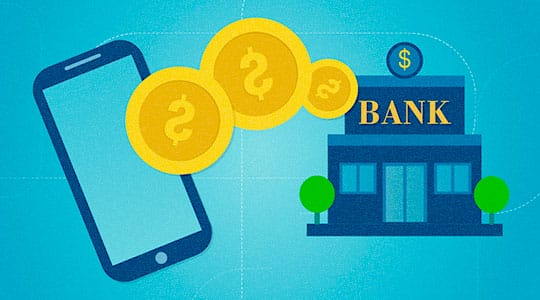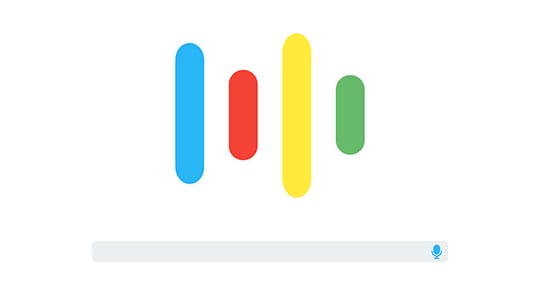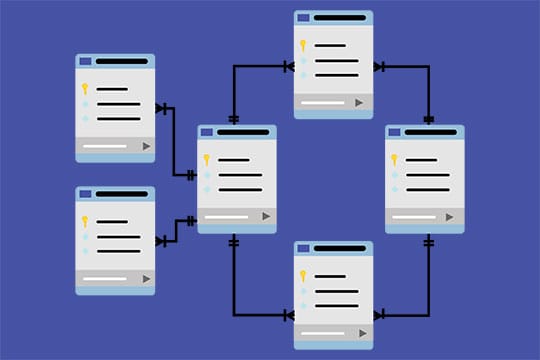Two decades back, many financial institutions created E-commerce business units to disrupt the market. Later, the “E” went away and became a new norm with large technology evolution and investment. The digital agenda is extended from operational efficiency and customer experience to big data and analytics. The financial services share the resemblance with unprecedented growth that technology investment brought to the retail sector. The digital wave is revolutionizing retail banking, payment, insurance, financial literacy, and wealth management. The booming financial technology (i.e. FinTech) market is expected to continuously enjoy the unabated growth at 74.16% CAGR from 2019 through 2025.
It’s a sign the financial industry is witnessing creative destruction of the and only those players will win that weigh in their potential on the FinTech spectrum scale and rearrange the services around customers embracing the most relevant and innovative trends. Here are some of the FinTech trends that financial services should brace to stay in the game and stand out in the market:
Going beyond the four walls of banks

The consumers’ reluctance towards physically visiting the banks (Especially popular among Millennials) is bringing the phenomena of digital-only banks where the consumers will get every financial service from the comfort of the couch. Be it, opening the account, making transactions, fund transfer, or any other financial service.
The digital-only banks will provide a digital interface- website and mobile app to the consumers with no physical branch existence to meet the expectations for instant and convenient digital interactions. However, not operating from the physical location comes in the favor of banks as it lowers down the operational and transactional cost that can be invested in delivering wow experience.
For instance, DBS Bank is offering branchless, signature-less, and paperless services to the people with ample security and happy returns of up to 7% on the savings account.
Recommended for you: Growth Hacking - A Definitive Guide to Grow Your Business Fast!
Reducing carbon footprint

The society is going cashless from digital wallet solution development to mobile banking apps where the payment for everything can be made at the flick of the switch. It has alleviated the need to carry paper money in the wallet thereby going greener.
There are a plethora of digital solutions that provide an alternative to the traditional banking system to avoid the restrictions that come with using their payment solution. The Europe government has also taken the initiative in the same line by launching a second-payment service directive that authorizes businesses to access third-party payment solutions linked to the bank accounts as an alternative to using a bank payment solution.
AI chatbots to offer customer service

Ron Shevlin said, “The challenge for the banks isn’t becoming digital, but its providing value that perceived to be in line with the cost and value that customers are comfortable paying for.”
The customer service stays at the heart and blood of financial institution innovation where AI integration has ended up the need of customers to make a call to the bank, wait for the necessary assistance or response and delayed response that double the frustration.
The AI bots as a voice assistant attend the customer calls or handle the conversation in real-time by analyzing the customer’s previous chat and financial history, and then the precise answer is provided quickly and efficiently. The conversation includes future saving planning, providing the latest market updates, loan interest calculation, search for the nearby branches or ATMs, and pretty more.
Blockchain shake things up

Numerous financial leaders come together to commercialize the new currency and apply them to various financial service scenarios, but cryptocurrency failed to take off with the masses. However, the underlying technology- blockchain with its public ledger, record immutability, smart contract, and decentralization feature caught enough attention and started taking over traditional banking systems.
The blockchain move is a lucrative opportunity for the banks as loan applications can be directly accessed by the customers, clearing and settlement process will be done in an automated fashion, cross-border payments get simplified, identity management can be done online, transactional cost get diminished with the elimination of intermediary, and providing immediate access to funds, which truncates the operational cost and resources.
65% of the banks are projected to have blockchain solutions as an integral part of the operational infrastructure in the next three years.
Voice Technology in Banking

We are already using voice technology in our daily lives when we search for a song with a voice search. Apart from that, we perform numerous functions on our smartphone and smart home devices through voice technology.
Now, this technology is all set to enter the banking sector. As of now, voice banking is available in Capital One, Ally Bank, and Mercantile Bank of Michigan. You can only perform a limited number of tasks with voice banking such as finding the details of your last transactions.
However, with time, the technology will improve; adding more functionalities along with advanced security features. So, you shouldn’t be surprised if you can perform various banking tasks such as transferring money or applying for mortgages with voice banking in the near future.
You may like: Best Finance Apps for Apple iPhone or iPad Users.
Regulation Technology (RegTech)

Regulatory compliance is one thing that FinTech as an industry has to take care of. And that’s where RegTech (Regulatory Technology) comes to the rescue. With RegTech, financial businesses can cover both model and compliance risk management.
According to Crowd Learning Hub, the RegTech investments are all set to grow by a mammoth 500% in 2020. In 2017, the number was $10.6 billion which is estimated to go up to $53 billion within a span of three years.
According to ESMA, RegTech will become affordable with an increase in the AI/ML tools in speech for the development of SupTech and RegTech. The algorithms of Machine Learning (ML) can assist backers and banks to comply with the regulations by both examining and reporting them. This offers a great way for banks to bypass penalties that are forced by the GDPR.
Tapping the power of data

With the platformification of the banks, the banks are sitting on the mountain of data that needs to be analyzed and acted upon to survive and thrive in the future. The data exist in silos- products, customer behavior, and transaction services need to be combined and analyzed to deliver an individualized experience to every bank customer.
For instance, the leading banks are using big data analytics to launch a data-driven marketing campaign. It creates a personalization engine that makes the customers take an interest in the banking products and services and increase the revenue. Going a level ahead, the banks have turned the personal financial management tool into a personal financial coaching tool. It is more proactive and conversational. It offers services beyond simple banking and transactional services.
The banks will win when they provide the right advice and right service at the right time; that’s all based on customer behavior leveraging big data analytics.
Taking the security up a notch

Unfortunately, cyber-threat is one of the top risks that banking institutions are facing. The rapid evolution of technologies, third-party vendor integration, cross-border information exchanges, and astronomical usage of mobile phones that have brought enormous advantages to the banks, they have also challenged the security aspect.
The banks are striking a balance between customer experience and fraud management through machine learning and predictive analytics. The system security is analyzed 24/7. When any unexpected activity is detected such as intruder is attempting to hack the network, then the concerned person is immediately informed about the intrusion or weakness so that decisions can be taken proactively.
The costly headache can also be avoided with biometric authentication implementation; the customer’s fingerprint, iris, or face is scanned and used for the authentication purpose. This technology has helped in curbing the fraud as no one can steal it from the customers.
Open banking becomes other reality

The customer’s demand has led the banks to create an open API. This allows the banks to share the customer’s data with authorized third-party vendors. The study shows that banks exploiting open APIs will benefit from the impressive hike in the revenue. The FinTech open new opportunities to create innovative experiences that further help to win more customers.
For instance, Anorak- the insurance provider partnered with True Layer (Provider of financial APIs) to gain access to the customer’s financial data for predicting the insurance cover and providing the best policy that matches their needs. It allows Anorak to capitalize on Open banking by having secured access to banking infrastructure.
You may also like: 4 Ways Digital Technology Revolutionized Modern Logistics Operations.
Conclusion

“If banks can’t offer something more valuable than Amazon Prime, then we are probably in the wrong business.” – Bradley Leimer
It indicates in the digital landscape, merely teaming up with a mobile app development company to build a mobile app is not enough to win the customers and seize an edge in the fierce competition. Putting the FinTech trend at the heart of banking operations is imperative to make the banking services customer-centric and take over the financial world by storm. Enter a new age of banking embracing next-gen technology trends!
This article is written by Patel Nasrullah. He is a co-founder at one of the best mobile app development company where he leads a team of expert mobile app developers, Peerbits. He devotes his time in inspiring young leaders to take the leap of faith. With the experience of 10 years in Web and App development, he now gives full attention to the enterprise by offering mobility solutions about strategic planning and execution.
 This article is written by Patel Nasrullah. He is a co-founder at one of the best mobile app development company where he leads a team of expert mobile app developers,
This article is written by Patel Nasrullah. He is a co-founder at one of the best mobile app development company where he leads a team of expert mobile app developers, 




